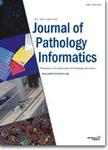版权所有:内蒙古大学图书馆 技术提供:维普资讯• 智图
内蒙古自治区呼和浩特市赛罕区大学西街235号 邮编: 010021

作者机构:Department of Pathology IRCCS Regina Elena National Cancer Institute Rome Italy Biostatistics Bioinformatics and Clinical Trial Center IRCCS Regina Elena National Cancer Institute Rome Italy Department of Computer Control and Management Engineering La Sapienza University of Rome Rome Italy UOC Anatomy Pathology Biobank IRCCS Regina Elena National Cancer Institute Istituti Fisioterapici Ospitalieri IFO Rome Italy Department of Radiological Oncological and Pathological Sciences Sapienza University of Rome Policlinico Umberto I Rome Italy Department of Experimental Medicine Sapienza University of Rome Policlinico Umberto I Rome Italy School of Medicine and Surgery University of Milano-Bicocca Monza 20900 Italy Tumor Immunology and Immunotherapy Unit IRCCS Regina Elena National Cancer Institute Rome Italy Scientific Direction IRCCS Regina Elena National Cancer Institute Rome Italy Institute of Experimental Endocrinology and Oncology National Research Council Naples Italy
出 版 物:《Journal of Pathology Informatics》 (J. Pathol. Inform.)
年 卷 期:2024年第15卷
页 面:100400-100400页
基 金:IRCCS Istituto Nazionale Tumori Regina Elena Ministero della Salute European Commission, EC NRRP, (CUP B53C22001820006, GA 101100633)
主 题:Computer-aided tool Digital pathology Lung cancer Machine learning NSCLC Pathology image QuPath Tumor-infiltrating lymphocytes Whole slide images
摘 要:Purpose: The abundance and distribution of tumor-infiltrating lymphocytes (TILs) as well as that of other components of the tumor microenvironment is of particular importance for predicting response to immunotherapy in lung cancer (LC). We describe here a pilot study employing artificial intelligence (AI) in the assessment of TILs and other cell populations, intending to reduce the inter- or intra-observer variability that commonly characterizes this evaluation. Design: We developed a machine learning-based classifier to detect tumor, immune, and stromal cells on hematoxylin and eosin-stained sections, using the open-source framework QuPath. We evaluated the quantity of the aforementioned three cell populations among 37 LC whole slide images regions of interest, comparing the assessments made by five pathologists, both before and after using graphical predictions made by AI, for a total of 1110 quantitative measurements. Results: Our findings indicate noteworthy variations in score distribution among pathologists and between individual pathologists and AI. The AI-guided pathologist s evaluations resulted in reduction of significant discrepancies across pathologists: three comparisons showed a loss of significance (p 0.05), whereas other four showed a reduction in significance (p 0.01). Conclusions: We show that employing a machine learning approach in cell population quantification reduces inter- and intra-observer variability, improving reproducibility and facilitating its use in further validation studies. © 2024 The Authors